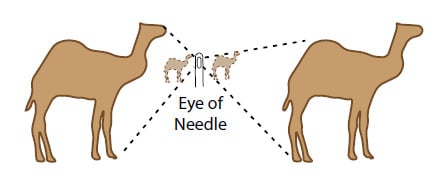The Physics of Augustine: The Matter of Time, Change and an Unchanging God
Abstract
:1. Introduction to Augustine, the Physicist
What, then, is time? If no one asks me, I know what it is. If I wish to explain it to him who asks me, I do not know…
But, then, how is it that there are the two times, past and future, when even the past is now no longer and the future is now not yet? But if the present were always present, and did not pass into past time, it obviously would not be time but eternity…
…And yet, O Lord, we do perceive intervals of time, and we compare them with each other, and we say that some are longer and others are shorter. We even measure how much longer or shorter this time may be than that time…But we measure the passage of time when we measure the intervals of perception….(Augustine, Confessions 11:XIV–XVI)
But since the mind itself, though naturally capable of reason and intelligence is disabled by besotting and inveterate vices not merely from delighting and abiding in, but even from tolerating His unchangeable light, until it has been gradually healed, and renewed, and made capable of such felicity, it had, in the first place, to be impregnated with faith, and so purified...Now the only way that is infallibly secured against all mistakes, is when the very same person is at once God and man, God our end, man our way.[1]
- (i)
- arguments must be quantified,
- (ii)
- that models and theories must be tested, both with experimental evidence from the natural world and from the Bible and
- (iii)
- that scripture be interpreted, at least initially, in its most straightforward, physical, literal sense.
Every good gift and every perfect gift is from above, coming down from the Father of lights with whom there is no variation or shadow due to change.(James 1:17, English Standard Version)
“For I the Lord do not change; therefore you, O children of Jacob, are not consumed.”.(Mal. 3:6, ESV)
2. The Student
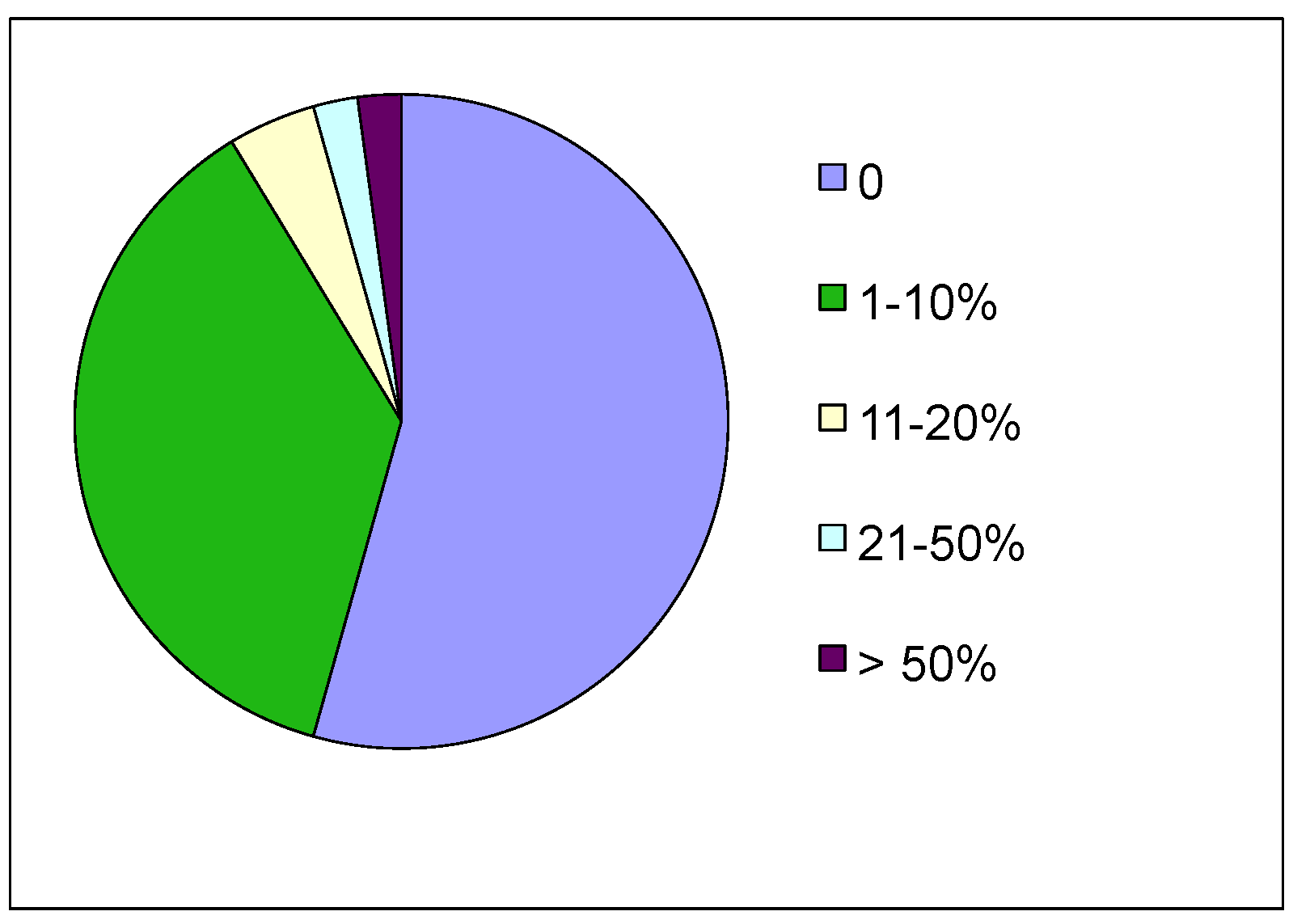
3. What Is Time and How Does It Govern Physical Laws?
3.1. The Nature of Time
3.1.1. The Math
3.1.2. The Perception of Time
What… is time? If no one asks me, I know what it is. If I wish to explain it to him who asks me, I do not know.(Augustine, op. cit.)
But how didst Thou make the heaven and the earth? and what is the engine of Thy so mighty fabric? …
[they] strive to comprehend things eternal, whilst their heart fluttereth between the motions of things past and to come, and is still unstable. Who shall hold it, and fix it, that it be settled awhile, and awhile catch the glory of that ever fixed Eternity, and compare it with the times which are never fixed, and see that it cannot be compared; and that a long time cannot become long, but out of many motions passing …but that in the Eternal nothing passeth, but the whole is present….[12]
…time does not exist without motion or change….[13]
3.1.3. A “Fearful” Proposition about Time
The fear of the Lord is the beginning of wisdom.(Proverbs 9:10)
My soul is on fire to know this most intricate enigma. Shut it not up, O Lord my God, good Father;…This is my hope, for this do I live, that I may contemplate the delights of the Lord.
Behold, Thou hast made my days old, and they pass away, and how, I know not. And we talk of time, and time, and times, and times….(Augustine Confessions, op. cit.)
…drawing near to the city, they had yet a more perfect view thereof…by reason of the natural glory of the city, and the reflection of the sunbeams upon it, Christian with desire fell sick; Hopeful also had a fit or two of the same disease….[16]
In the beginning was the Word, and the Word was with God, and the Word was God. He was with God in the beginning. Through him all things were made; without him nothing was made that has been made.(John 1:1–3, NIV)
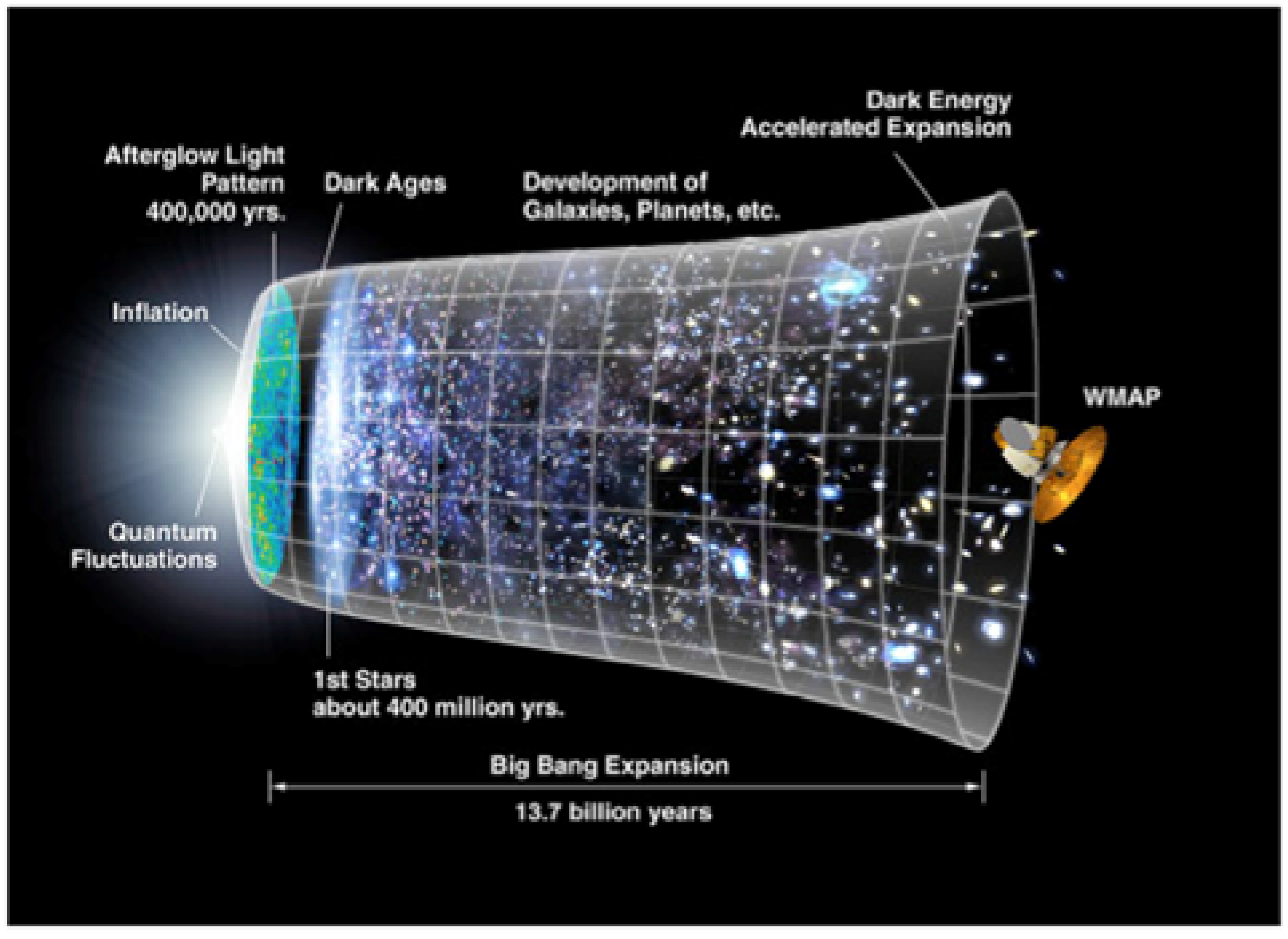
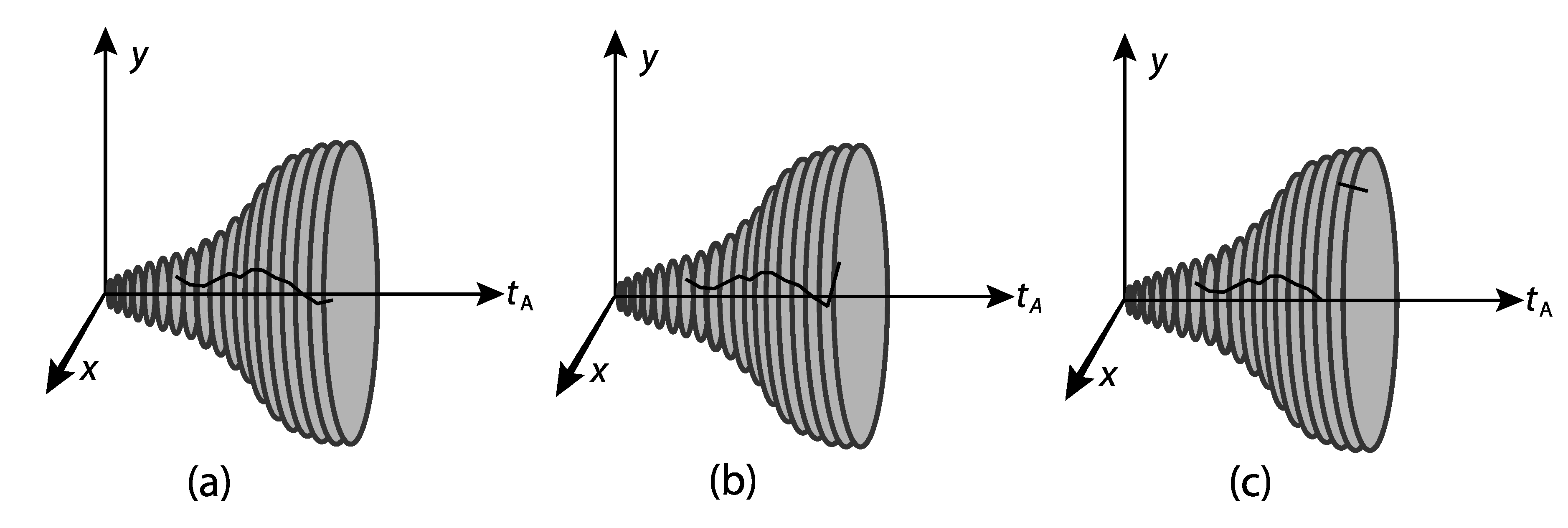
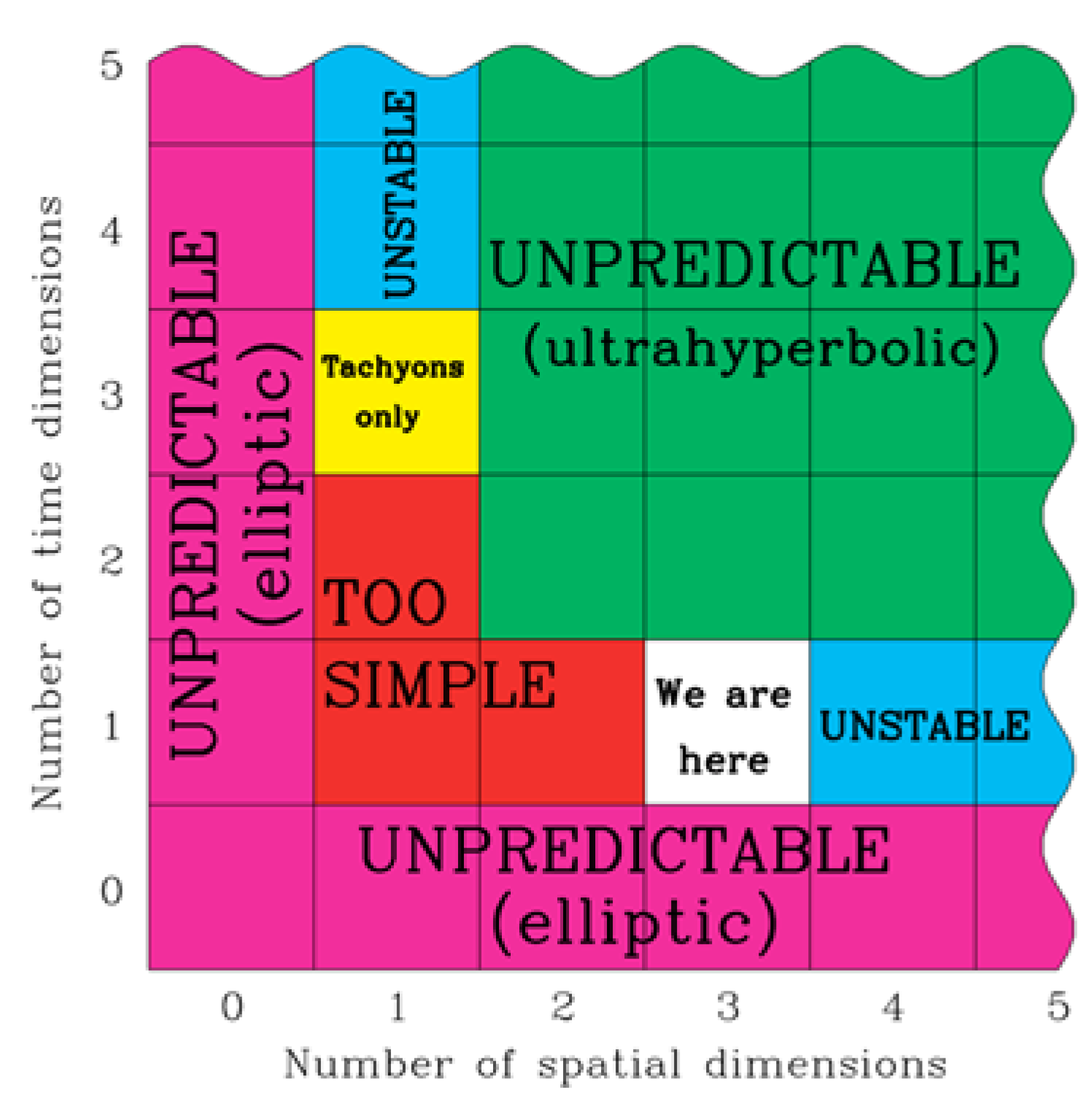
3.2. Original Sin: Quantifying the Possible Outcomes of Human “Free Will”
- (i)
- What is the difference between a highly-unlikely event and a miracle?
- (ii)
- What are the limits on science’s ability to project the future course of events?
- (iii)
- Can God change what we consider the “past”?
3.2.1. Quantization of Time7
3.2.2. What Is the World That GOD Created?
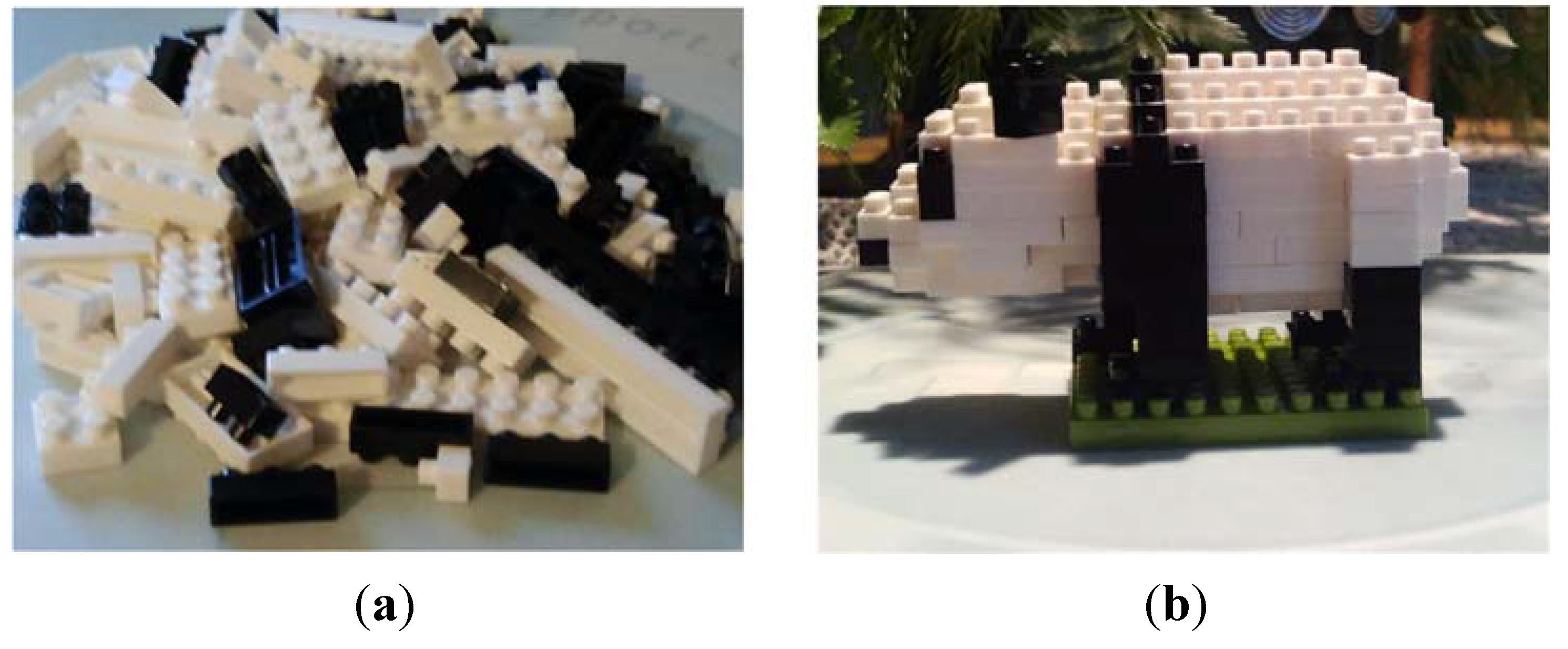
3.2.3. Free Will and the Tree
The woman [Eve] said to the serpent, “We may eat fruit from the trees in the garden”, but God did say, “You must not eat from the fruit of the tree that is in the middle of the garden…or you will die.”…“You will not surely die”, the serpent said to the woman. “For God knows that when you eat of it, your eyes will be opened, and you will be like God, knowing good and evil.”.(Genesis 3:2–5)
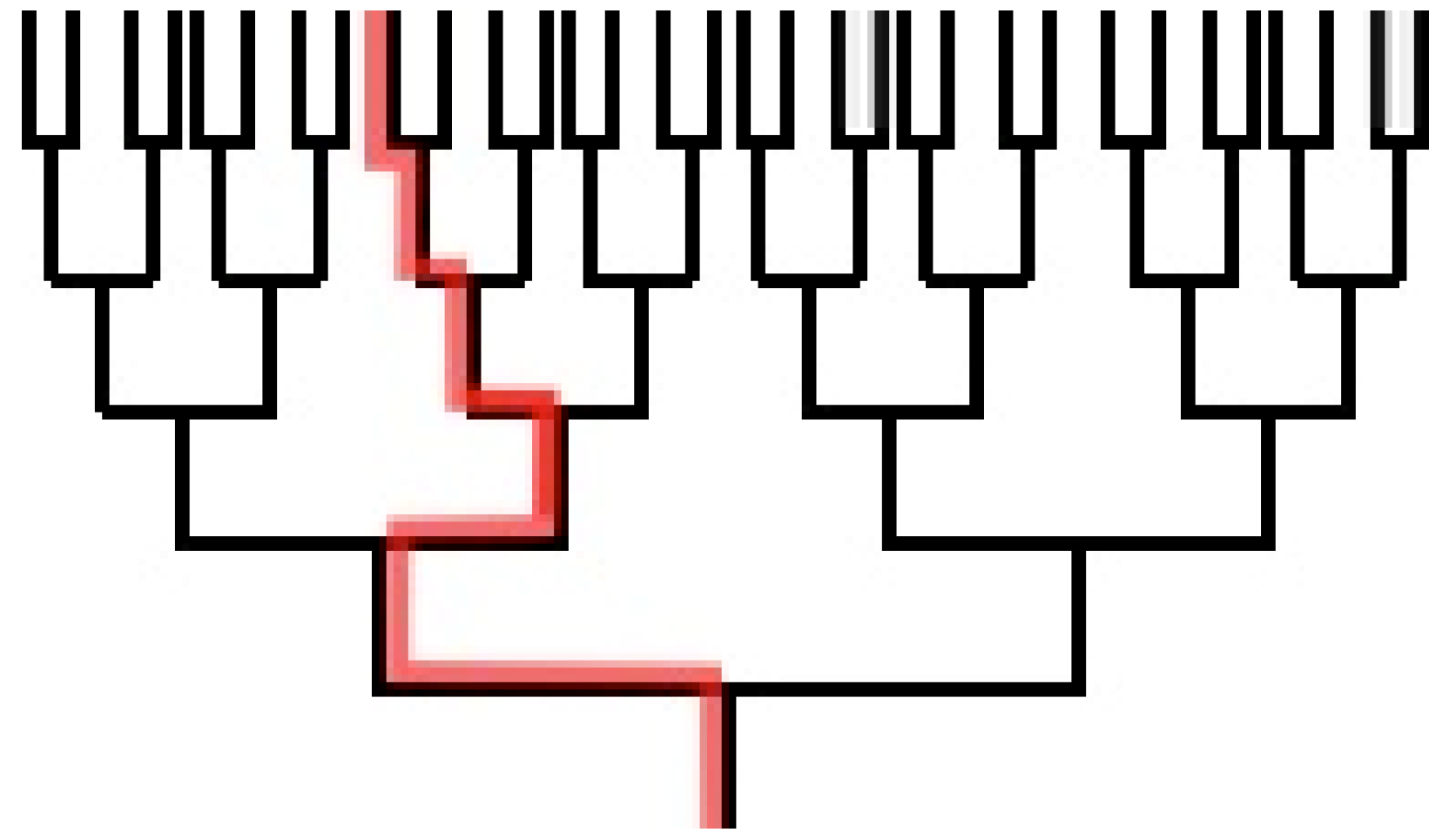
4. Power, Miracles and Changing the Past (?)
5. Conclusions
- Interpretation of scriptures (e.g., the camel vs. rich man comparison) can be done in a literal, simple, physical way that produces additional quantitative understanding.
- God may have freedom to alter the past, with no violation of physical law.
- A “miracle” should be not be defined as a phenomenon that violates laws of physics, but rather as series of events that would not and could not have occurred without the activity of God (e.g., see previous suggestion).
- “Possible” and “impossible” should be considered from a probability perspective: should one chance in 1,000,000 be considered “possible”? One chance in ?
Acknowledgments
Abbreviations
| 3D | 3-dimensional |
| 2D | 2-dimensional |
| m | meter |
| s | second |
| yr | year |
| ly | light year |
Conflicts of Interest
- 1Use of the descriptor “all-powerful” will be briefly explored in this paper. The author does not believe that Augustine explicitly asserts that God is “all-powerful” in the commonly (mis)understood sense of “He can do anything we can imagine”.
- 2So the man of God said, “Where did it fall?” And he showed him the place. So he cut off a stick, and threw it in there; and he made the iron float. II Kings 6:6 (New King James Version).
- 3This also applies to the x, y and z coordinates of space, though we know time is a different sort of entity.
- 4This last pair of philosophical definitions, pointed out to the author in 2007 by Rev. Dr. Rodney Holder, former Course Director of the Faraday Institute of the University of Cambridge, led, by a circuitous route to the simpler, more “physical” view of times discussed in this paper and the proposed Physical Theology course.
- 5“Simple”, in the sense of uncomplicated, not necessarily “easy to understand”.
- 6There is a risk here of being accused of heresy, in attempting to answer questions like, “Why is there a Trinity? Why not a duality, or tetrality?”, rather than simply quoting scripture and saying, “That’s what is written; don’t ask anything further.” The author’s preference is for a collaborative search by science and religion scholars for answers to these obvious questions that even children ask. From some personal experience, there is also a danger in these investigations of time and our relation to the “expanded” universe, that one encounters a “fear of the Lord” that is rather suffocating. Perhaps this is not a bad thing.
- 7We are initially avoiding the direct question of what, exactly, is this second “time-like” dimension that God operates in, but this evasion of the question is not essentially different than science has done for many years with the nature of our “normal” time.
- 8Note that the issue of times tA and tB, how Adam and Eve relate to them, and how they seem to have been expelled from the freedom of tB (the Garden of Eden), are questions that must also be faced.
- 9In contrast to Equations 7 and 8, these numbers result from considering the decision points to correspond to the characteristic vibration time of each molecule making up a human body. Each molecule in the body must then follow a specific path, in order to correspond to a given collective path. If Equations 7 and 8 are closer to reality, the camel would beat the rich man by a factor of .
References
- St. Augustine. “The City of God.” In The Complete Works of Augustine. Seattle: Amazon Digital Services, 1887, pp. 10536–49, Kindle edition. [Google Scholar]
- Christopher J. Isham, and John C. Polkinghorne. “The Debate over the Block Universe.” In Quantum Cosmology and the Laws of Nature: Scientific Perspectives on Divine Action, 2nd ed. Edited by R.J. Russell, N.C. Murphy and C.J. Isham. Vatican City State and Berkeley: Vatican Observatory and The Center for Theology and the Natural Sciences, 1996, pp. 139–47. [Google Scholar]
- “Thomas Nordlund University Faculty.” Available online: http://people.cas.uab.edu/~nordlund/ (accessed on 11 March 2015).
- Sean Carroll. From Eternity to Here: The Quest for the Ultimate Theory of Time. New York: Plume, Penguin Publishing, 2010, p. 448, Kindle edition. [Google Scholar]
- Craig Callender. The Oxford Handbook of Philosophy of Time. Oxford: Oxford University Press, 2011. [Google Scholar]
- Brian Greene. The Hidden Reality. New York: Vintage Books, 2011. [Google Scholar]
- Marc Wittman. “The Inner Sense of Time: How the Brain Creates a Representation of Duration.” In Nature Reviews Neuroscience; 2013, 14, pp. 217–23. Available online: http://www.ncbi.nlm.nih.gov/pubmed/23403747 (accessed on 11 March 2015). [Google Scholar]
- Mariette DiChristina, ed. A Question of Time: The Ultimate Paradox. New York: Scientific American Press, 2012, p. 190, Kindle edition.
- Ulrich Meyer. The Nature of Time, 1st ed. Oxford: Clarendon Press, 2013. [Google Scholar]
- Stephen Hawking, and Roger Penrose. The Nature of Time. Princeton: Princeton University Press, 2010. [Google Scholar]
- Lee Smolin. Time Reborn: From the Crisis in Physics to the Future of the Universe. Boston: Mariner Books, 2014. [Google Scholar]
- St. Augustine. “The Confessions of Saint Augustine.” Edited by R.S. Munday. Salt Lake City: Project Gutenberg, p. 401. Available online: http://www.gutenberg.org/files/3296/3296-h/3296-h.htm - link2H_4_0011 (accessed on 11 March 2015).
- St. Augustine. The Literal Meaning of Genesis, Vol I, Books 1–6. Edited by Johannes Quasten, Walter J. Burghardt and Thomas C. Lawler. New York: Newman Press, 1982. [Google Scholar]
- Simon Blackburn. The Oxford Dictionary of Philosophy, 2nd revised ed. Oxford: Oxford University Press, 2008. [Google Scholar]
- Sinclair B. Ferguson, David F. Wright, and J.I. Packer. New Dictionary of Theology. Westmont: Intervarsity Press, 1988, p. 757. [Google Scholar]
- John Bunyan. The Pilgrim’s Progress. Salt Lake City: Project Gutenberg, 2008, section 383. [Google Scholar]
- NASA. “Ringside Seat to the Universe’s First Split Second. ” Available online: www.nasa.gov/vision/universe/starsgalaxies/wmap_pol.html (accessed on 11 March 2015).
- Brian Greene. The Fabric of the Cosmos: Space, Time, and the Texture of Reality, 1st ed. New York: Alfred A. Knopf, 2004, p. 130, (Figure 5.1). [Google Scholar]
- T. Tajima, and G. Mourou. “Zettawatt-Exawatt Lasers and Their Applications in Ultrastrong-Field Physics.” Physical Review Special Topics—Accelerators and Beams 5 (2002): 031301-1–9. [Google Scholar]
- Hui Chen, Scott Wilks, James Bonlie, Edison Liang, Jason Myatt, Dwight Price, David Meyerhofer, and Peter Beiersdorfer. “Relativistic Positron Creation Using Ultraintense Short Pulse Lasers.” Physical Review Letters. 2009, 102, pp. 105001-1–4. Available online: http://link.aps.org/doi/10.1103/PhysRevLett.102.105001 (accessed on 11 March 2015).
- Edward Farhi, Alan H. Guth, and Jemal Guven. “Is It Possible to Create a Universe in the Laboratory by Quantum Tunneling? ” Nuclear Physics B 339 (1990): 417–90. [Google Scholar]
- Max Tegmark. “On the Dimensionality of Spacetime.” Classical and Quantum Gravity. 1997, 14, pp. L69–L75. Available online: http://iopscience.iop.org/0264-9381/14/4/002/pdf/0264-9381_14_4_002.pdf (accessed on 11 March 2015).
- Max Tegmark. “Spacetime dimensionality.” Available online: http://en.wikipedia.org/w/index.php?title=File:Spacetime_dimensionality.svg&page=1 (accessed on 11 March 2015).
- John McTaggart Ellis McTaggart. “The Unreality of Time.” Mind: A Quarterly Review of Psychology and Philosophy. 1908, 17, pp. 456–73. Available online: http://en.wikisource.org/wiki/The_Unreality_of_Time (accessed on 11 March 2015).
- Stephen T. Thornton, and Andrew Rex. Modern Physics for Scientists and Engineers, 4th ed. Boston: Cengage Learning, 2013, Chapter 16.3. [Google Scholar]
- Julian Barbour. The End of Time: The Next Revolution in Physics. New York: Oxford University Press, 2000. [Google Scholar]
© 2015 by the authors; licensee MDPI, Basel, Switzerland. This article is an open access article distributed under the terms and conditions of the Creative Commons Attribution license (http://creativecommons.org/licenses/by/4.0/).
Share and Cite
Nordlund, T. The Physics of Augustine: The Matter of Time, Change and an Unchanging God. Religions 2015, 6, 221-244. https://doi.org/10.3390/rel6010221
Nordlund T. The Physics of Augustine: The Matter of Time, Change and an Unchanging God. Religions. 2015; 6(1):221-244. https://doi.org/10.3390/rel6010221
Chicago/Turabian StyleNordlund, Thomas. 2015. "The Physics of Augustine: The Matter of Time, Change and an Unchanging God" Religions 6, no. 1: 221-244. https://doi.org/10.3390/rel6010221
APA StyleNordlund, T. (2015). The Physics of Augustine: The Matter of Time, Change and an Unchanging God. Religions, 6(1), 221-244. https://doi.org/10.3390/rel6010221




